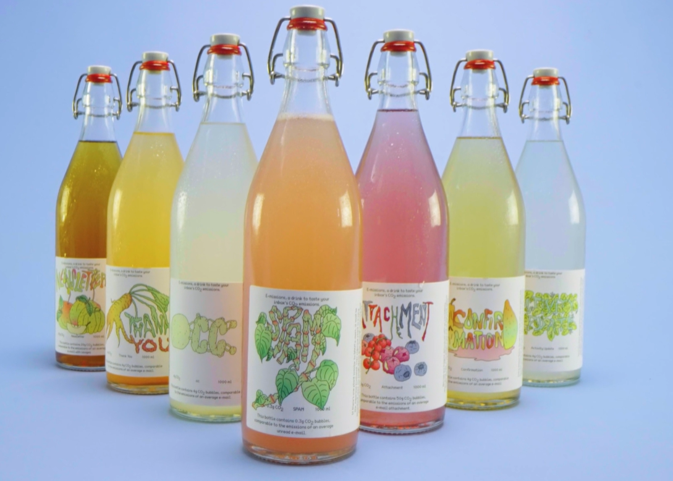
Sensing CO2
With Sensing CO2, we convert CO2 emissions into a sensory taste experience. CO2 is an odourless gas and invisible to the human eye. In some exceptions the gas is visible: for example as bubbles in sparkling mineral water or sodas. Sensing CO2 uses the sensation of a fizzy drink: The added CO2 bubbles trigger the tongue receptors while the amount defines the intensity. A minimal increase can quickly change pleasure to discomfort. To become resilient, an understanding of the matter is crucial. Sensing CO2 aims to connect abstract numbers with direct experience, scientific data with human senses. Let your taste buds experience how our behaviour influences CO2 levels and taste possible futures.
Based on your personal digital behaviour, the performative installation will enable you to experience different soft drinks, making you taste the different modes of digital, connected communication.
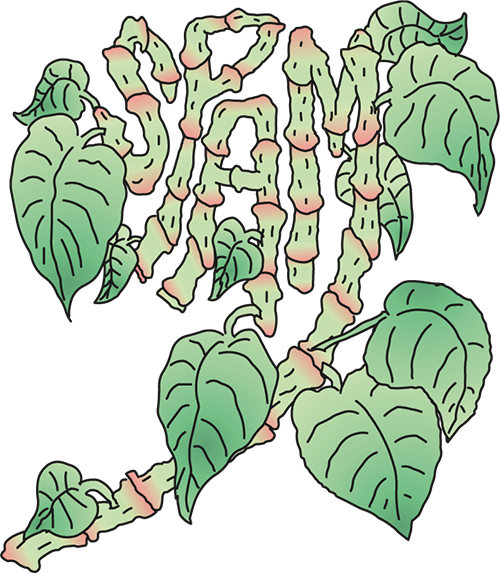
01 / Spam
If there’s one plant similar to SPAM e-mail, it must be the Japanese Knotweed. This very vigorous perennial plant is a very persistent weed. It’s tough stems grow through concrete and can cause damage to buildings, pipes and roads. On top of that, it is so persistent that once it has rooted, it is incredibly difficult to get rid of. So much so, that there are Knotweed control companies who basically act as SPAM filter. What to do about it yourself? Be scarce with sharing your e-mail adress and adjust your SPAM filter every season. As for the Knotweed: try to weaken the plant by cutting the stems several times per growing cycle. The shoots should be discarded (…not in the compost where they will grow). But why waste Knotweed when the plant is edible? With a taste similar to rhubarb, sour, tart and tangy, Japanese Knotweed is the ideal ingredient for this refreshing lemonade.
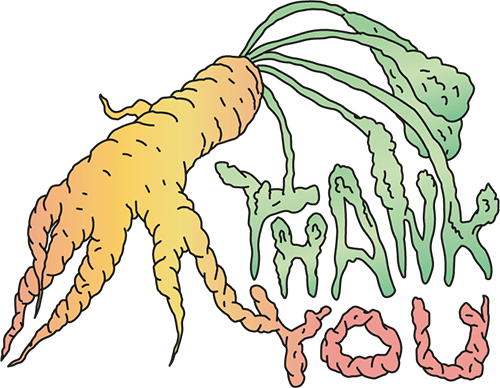
02 / Thank You
“Are deformed carrots edible?” is an actual question on the internet. Yes! They taste just like their straight companions! Please don’t discriminate based on appearance. Also: Think twice about sending that e-mail simply containing “Thank you!” or “thanks!!” or perhaps “thx”. The exceptionally shaped carrot is our mascotte for being overly perfect and polite. If every Dutch person sent one less thank you e-mail per day, it would save 5.073 tonnes of carbon a year - equivalent to 25.052 flights to Madrid. Let’s save the world with imperfection!
The Top 10 list of most regularly sent e-mails contains other one-word-mails to perhaps skip every once in a while:
- Thank you
- Thanks
- Have a good weekend
- Received
- Appreciated
- Have a good evening
- Did you get/see this?
- Cheers
- You too
- LOL

03 / Confirmation
In 2020 Russian president Vladimir Putin extended the embargo on European food until 2022. Dutch and Belgian pear farmers suffer particularly and experience volatile sales. Take a look at your inbox and count the confirmation e-mails. Why not put an embargo on those too! When ordering just one item online, you can receive up to 8 e-mails: confirmation of your account, confirmation of your order, confirmation that the package is sent out, confirmation that the package arrived at the distribution center… and so forth. One confirmation is enough! Time for an automated email boycott!
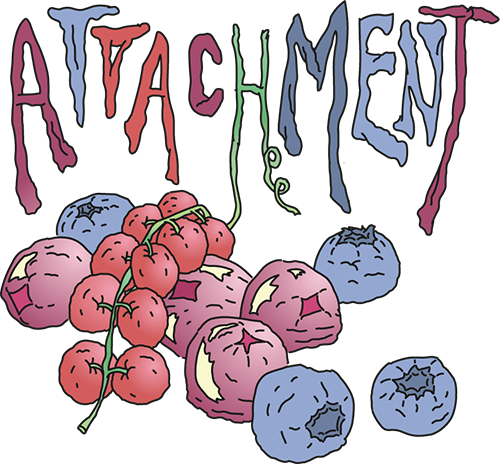
04 / Attachment
Berries are fragile delicacies with an incredibly short shelf-life. This makes them one of the most wasted fruits. Yet their packaging and transport is a highly consuming affair. If e-mails were fruits, large attachments would be berries. Sending high-resolution photos and extensive .pdf files is the most consuming e-mail variant. Such files are better stored on a (local) server with a shareable direct link.
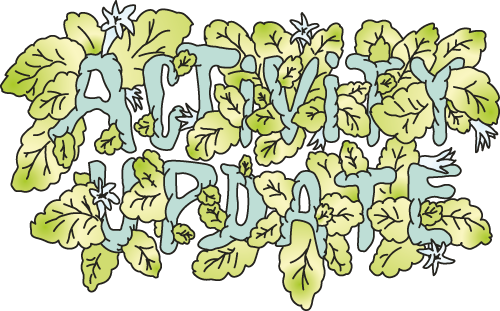
05 / Activity Updates
This herb can rapidly sprout, yet be easily structured: Lemon balm grows in clumps and spreads by seeds and vegetatively (a new seedling germinates from a fragment of the parent plant). Once you start growing it, there’s almost always too much, just like those activity updates in your inbox. Activity updates are e-mails sent by social platforms such as Facebook, Slack or Teams. It is a practical feature to not miss important messages. But does it also happen to you, that your entire inbox is overwhelmed with updates? These e-mails of notifications of updates of activities are like the overly energetic lemon balm, adjust to taste.
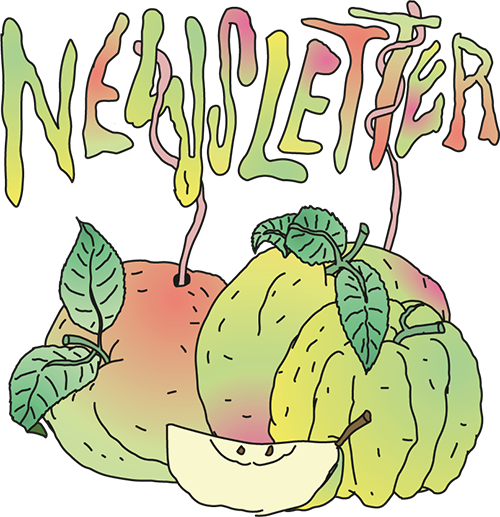
06 / Newsletter
Whether fallen apples are small, green and unripe, or matured and ready to harvest: they are the result of a trees’ natural size reduction. This moment is called “June drop”. An inbox can sometimes look quite similar to the ground underneath a tree: scattered with newsletters that stay unread until the next season or are deleted without being read. Receiving mail from senders that you haven’t signed up for? There should always be an “unsubscribe” link at the end of an e-mail. Pour yourself a glass of lemonade, unsuscribe from all those unread newsletters and save up to 60kg of CO2 emissions in a year (which is equal to producing 1kg of beef)!
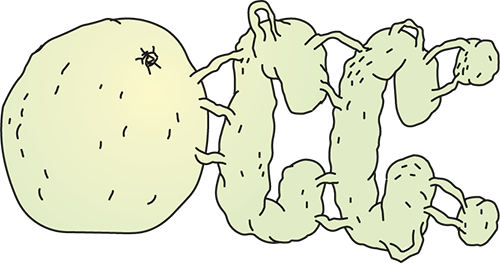
07 / CC
Lime is a fragrant and delicious fruit, shiny and green. Three for a euro? Often it happens that only one is eaten while the others stay untouched and dry up and turn yellow. Their fate is similar to many cc: e-mail’s, received, unread and slowly loosing relevance. On the contrary, yellow limes are still full of flavour and have been used to make this zesty lemonade.
Upcoming tastings
Past tastings
- RSM - The ForceRotterdam
- Digital Power DatahubDen Bosch
- SIDNUtrecht
- Digital PowerAmsterdam
- Nemo MarineterreinAmsterdam
- Sonic Acts Festival [cancelled]Amsterdam
- Nacht van de OntdekkingenLeiden
- ECP Platform for the Information SocietyThe Hague
- RSM Alumni EventHortus Botanicus
Book a tasting:
If you are interested in Sensing CO2 and would like to enthuse an conversation on the digital lifestyle and create an unique experience for your organization or event, you can contact Leanne.
 E-Missions
E-Missions